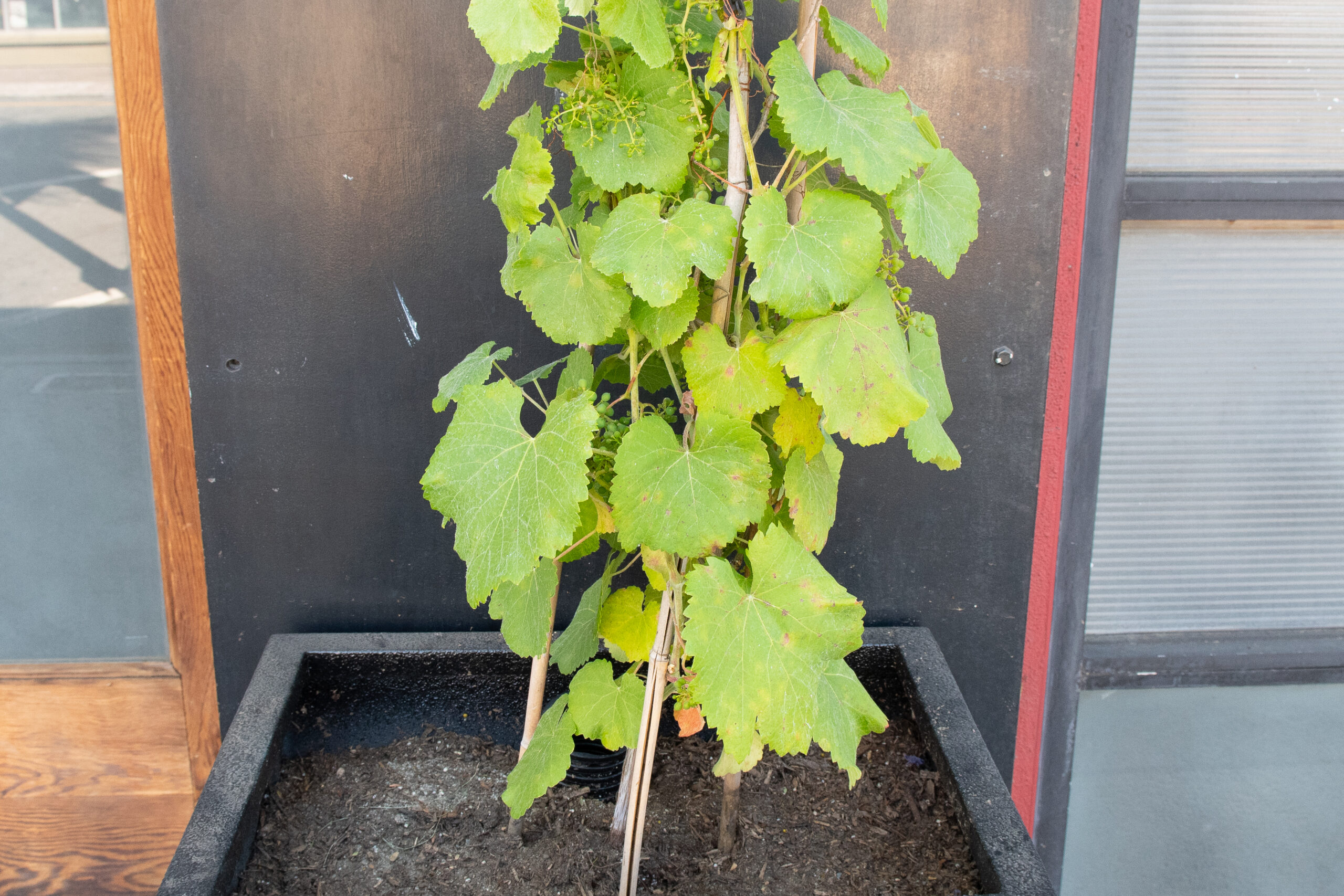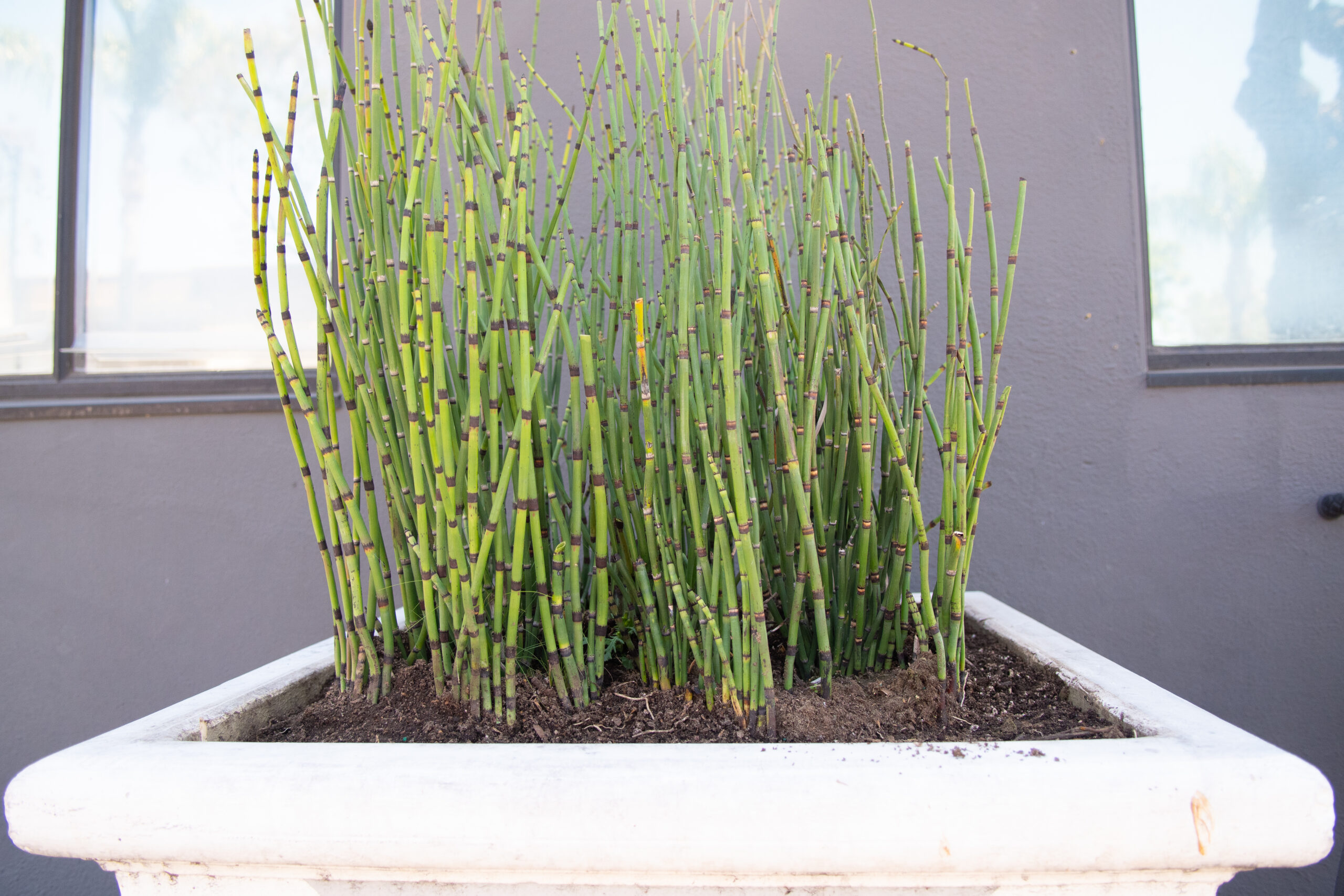SoFA Urban Garden
Located at 450 South First Street
California Wetland

Roger’s Red Grape
Scientific Name: Vitis ‘Roger’s Red’
Native Habitat: Found in the foothills of Northern and Central California
Roger’s Red Grape is a hybrid wild grape that is used mainly for landscaping. This variation is not found in the wild, but was made from wild Californian grape species. It is great to use for growing plants on walls, fences, or shade structures.

Rough Horsetail
Scientific Name: Equisetum hyemale
Native Habitat: Found in northern North America, Europe, and northern Asia. Prefers to live in wetlands and riparian zones with seasonal flooding.
The Rough Horsetail is a prehistoric looking plant that grows multiple green straw-like stems instead of a typical leaf. These stems are hollow inside and grow in dense clumps like bamboo. Rough Horsetail is commonly used in water gardens and stormwater management, but can also be found in ornamental urban planters.
Roger’s Red Grape
Scientific Name: Vitis ‘Roger’s Red’
Native Habitat: Found in the foothills of Northern and Central California
Roger’s Red Grape is a hybrid wild grape that is used mainly for landscaping. This variation is not found in the wild, but was made from wild Californian grape species. It is great to use for growing plants on walls, fences, or shade structures.
Rough Horsetail
Scientific Name: Equisetum hyemale
Native Habitat: Found in northern North America, Europe, and northern Asia. Prefers to live in wetlands and riparian zones with seasonal flooding.
The Rough Horsetail is a prehistoric looking plant that grows multiple green straw-like stems instead of a typical leaf. These stems are hollow inside and grow in dense clumps like bamboo. Rough Horsetail is commonly used in water gardens and stormwater management, but can also be found in ornamental urban planters.
Planter Themes
Redwood Forest
California Wetland
Oak Woodland
California Chaparral
California Grassland
Coastal Sage Scrub
DID YOU ENJOY THIS EXPERIENCE?
Let us know in this survey
HOW ARE THE PLANTS DOING?
Submit a maintenance request







